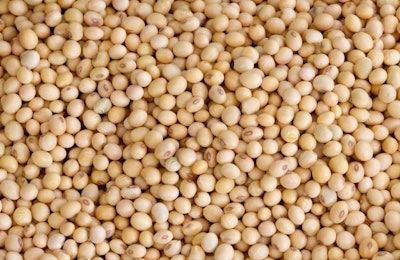
Soybean production worldwide in 2016 exceeded 333 million metric tons, and soybean meal was over 225 million metric tons. Thus, soybeans and soybean meal will remain a major player in commodities and a staple ingredient in animal diets, according to Dr. Sifri (Sifri Solutions) in a presentation at the recent European Symposium on Poultry Nutrition (ESPN 2017) conference in Spain. With the U.S., Argentina and Brazil being the major soybean producers, one can focus on quality aspects by country of origin — at least as a starting point in evaluating soybean meal’s performance as the main protein source in most animal diets.
In terms of future developments, according to Sifri, it will be important to consider two aspects that will drive soybean meal technology and use in animal feeds:
- The interaction of soybean meal with feed additives. Such an example is the incorporation of enzymes like proteases that can potentially increase protein digestibility and/or reduce anti-nutritional factors — most of which are proteins. Another example is that of non-starch polysaccharides (NSPs) enzymes, which are currently geared towards breaking down NSPs found in cereals. Similar, but not the same, NSPs in soybeans are not attacked by present NSP enzymes with the same vigor, and, as such, finding soybean NSP enzymes can become a priority in the near future.
- Genetic improvement by modifying composition. Instead of breaking down NSPs in soybeans, there is an effort to eliminate or simply reduce them, but at the expense of which nutrients? After all, soybeans contain NSPs for some reason, and upsetting the balance can bring about unforeseen results. But it is worth exploring. Such direction could be increasing oleic acid in soybeans; this is one of the major lipids in olive oil, and in this manner, we could improve the health benefits of soy oil, not only for humans, but also for animals that consume soybean meal with residual oil unavoidably present as always.
Soybeans remain a favorite topic among nutritionists, but we often take them for granted, not unlike the case of corn or wheat. But, given that they make up together over 90 percent of most diets for poultry and pigs, it is high time we start paying more attention to what experts are thinking about the future of our most precious raw materials.

















